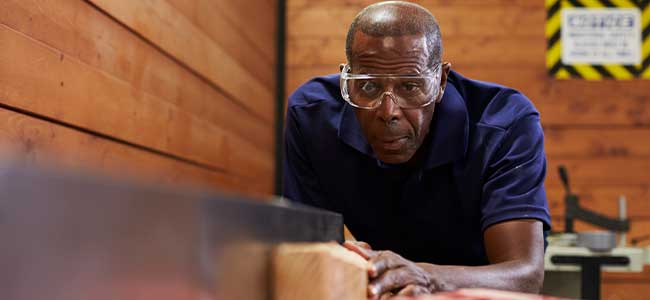
Vision Protection that Makes a Difference
Don’t forget to involve your team in the process.
- By Randy DeVaul
- May 01, 2023
The topic of safety eyewear is as repetitive as the OSHA Top Ten list. That means we tend to skip or briefly skim such articles because we believe “nothing changes.” Significant changes in technology, however, provide better protection and value in safety eyewear. Sometimes, we just need a reminder on how to ensure our PPE is right for the wearer and the assigned task.
Start with your risk assessment. PPE risk assessments have been an OSHA requirement for decades. Conducting a quality risk assessment has greater value than mere compliance. World-class safety employers understand the business advantage of identifying hazards and providing the PPE that addresses those hazards. Taking a proactive, preventative approach ensures compliance and competitive advantage by reducing risk and unbudgeted costs. It also demonstrates to your team that they matter and that your intent is to keep them safe.
Review your risk assessment chart annually with your team (not at your desk) to ensure new hazards have not crept in with changes to processes or equipment. Always include on your checklist of start-up of new equipment to conduct an updated risk assessment to catch any hazards that may be part of the new process.
Train your team on the identified hazards with the proper protective equipment needed that keeps them safe in the work area and while performing their tasks. More than 60 percent of all eye injuries are a result of people not wearing protection or wearing the wrong protection for the task being performed.
PPE 101 tells us that if you are working with a liquid or spray, safety glasses with side shields are not the correct PPE to wear. Allowing your team to wear the wrong PPE makes them more susceptible to injury while you become directly liable for the injury with the regulators and attorneys. When a team member goes blind because you condoned or ignored the proper use of PPE, you have to live with that, too.
As of this writing, the newest technology provides safety eyewear sized for different shapes of faces for better form and comfort while enhancing function in protection against high impact, fogging and improper fit. Your safety distributor can help you find the appropriate eyewear to match your exposures. PPE manufacturers can assist you with programs that let you sample and trial the PPE prior to purchase. This allows your team to participate in the PPE selection and ensures you purchase the right PPE the first time, saving your budget.
As a quick review and reminder, you should know:
- Safety glasses with side shields or wraparounds are intended to protect from flying debris.
- Vented goggles protect from air-suspended particulates and mists.
- Unvented goggles protect from liquids, sprays and fluid splashes.
- A high-impact face shield may be required as secondary protection for the eyes and primary facial protection.
Never get sucked into the “flavor of the month” club. Your team should help you identify the right PPE through trials and sampling, but they don’t get to pick something just to look stylish. When they understand the hazard and know you are looking for the best PPE to address their safety, most of your team will be on board with what you are doing.
Additional benefits to this approach are numerous. Selecting the right eyewear for the hazard ensures better levels of protection and better compliance in wearing the PPE, followed by reduced numbers of risks and injuries. Your safety eyewear will add value to your team by purchasing better quality, comfort and protection levels than the cheaper, imported, poor-fitting PPE that we end up with when we simply chase the price point. Changing out PPE based on price only is very expensive.
Finally, consider additional options for those team members who already wear prescription lenses. Many employers provide prescription safety eyewear but, in many cases, that eyewear is difficult to budget or control as options include progressive lenses, tints, expensive spring-loaded frames and replacing those lenses when scratched or when the “annual replacement” date becomes available.
A couple of options exist. Some safety distributors now offer eyewear kiosks to order eyewear on-site and get them shipped directly to an employee’s home within the same amount of time as ordering them through an optical company. You control the options, and they select from those options.
Another price-saver without compromising safety is providing your prescription wearers with over-the-glass safety glasses. They wear their daily eyewear while you offer non-distorted protection at work. If the over-the-glass eyewear becomes scratched or damaged, you replace them at a fraction of the cost of prescription lenses, and the employee’s daily eyewear and eyes remain protected.
Following these suggestions will give your team members effective, quality safety eyewear while helping you control costs. Your team and your boss will thank you.
This article originally appeared in the April/May 2023 issue of Occupational Health & Safety.